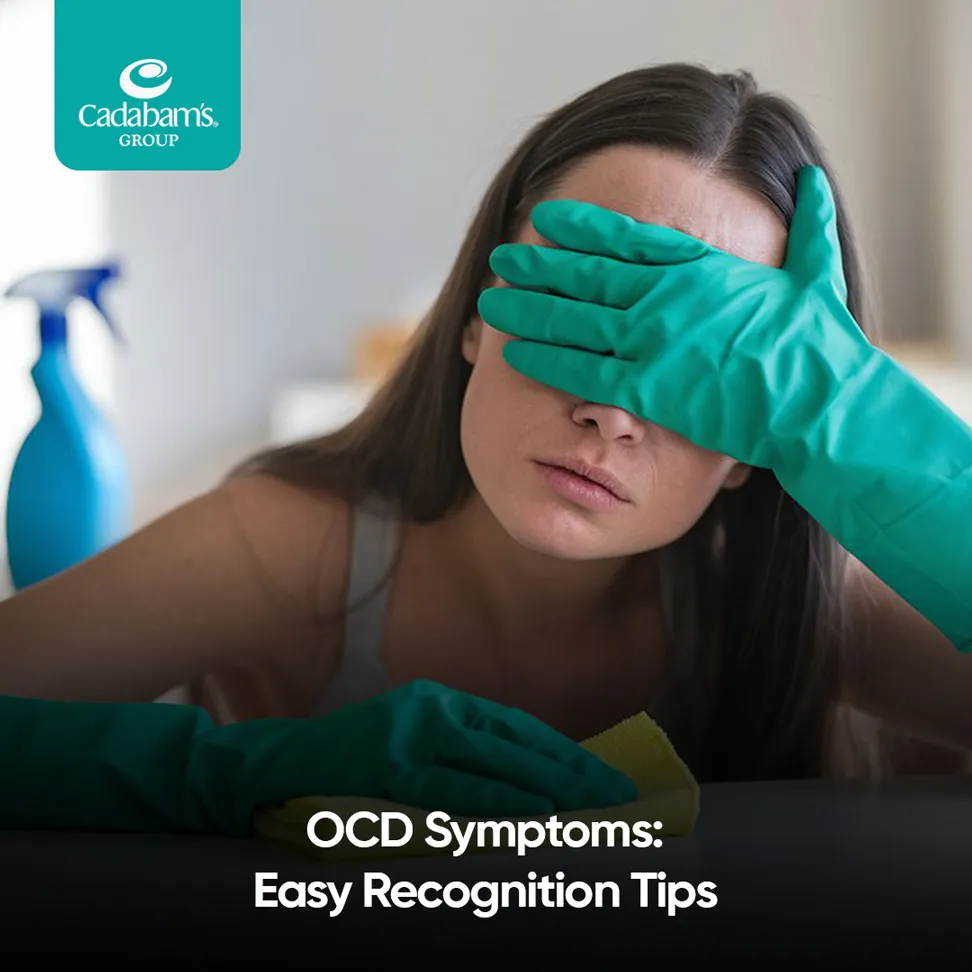Obsessive Compulsive Disorder (OCD) is a serious mental health disorder that affects millions of people across the world. It is characterized by obsessive thoughts, which consequently lead to compulsive behaviors. The disorder leads to a complete breakdown in a person’s functioning, causing significant distress to everyone involved.
Exploring the Basics of Obsessive-Compulsive Disorder
In its essence, OCD is defined by uncontrollable, repetitive thoughts called obsessions which eventually lead a person to exhibit compulsive behaviors. A person with OCD exhibits these characteristics regardless of the ill effects it has on their daily life and functioning. Eventually, this disorder begins to affect all aspects of a person’s daily functioning, leading to significant distress.
Common OCD Myths
Much like with most other mental health disorders, there is a poor understanding of OCD, too. This has led to multiple myths that can cause additional distress to a person battling the disorder.
Myth 1: OCD Is Just About Being Tidy
Popular culture and social media have distilled down the disorder into basic archetypes that are rarely ever accurate. Tidiness being associated with the disorder is one of them. However, there is a lot more to OCD than just this.
Myth 2: Everyone Has a Little OCD
This is a myth that trivializes OCD. Not everyone who prefers order or cleanliness has OCD. The disorder involves intense, uncontrollable obsessions and compulsions that significantly disrupt daily life, and generalizing it can feel incredibly invalidating for those going through it.
Myth 3: OCD Only Affects Adults
The disorder can develop in anyone at any age, including children and adolescents. Early onset OCD manifests differently in children and teens when compared to adult OCD. Adult OCD can involve more severe symptoms and can have a higher likelihood of persisting into adulthood.
Myth 4: OCD Isn’t Treatable
One of the most dangerous myths about any disorder is that it isn’t treatable. This prevents a lot of people from seeking help and recovering. OCD is treatable, and methods like CBT (Cognitive Behavioral Therapy), ERP (Exposure and Response Prevention), and medication together can help a person live a contented life.
Understanding OCD Signs and Symptoms in Adults
OCD symptoms faced by adults can usually lead to a complete breakdown in daily functioning and affect their relationships as well. OCD can often result in repeated, uncontrollable thoughts and behaviors that take over a person’s day.
Common Obsession Symptoms in OCD
The common fears associated with OCD (known as obsessions) include contamination, fear of harming others accidentally, or an all-consuming need to keep things in perfect order. These thoughts can be persistent and unwanted, leading to severe anxiety and distress.
Themes of Obsessions Behaviour
Themes of obsessions in OCD can vary widely but often focus on cleanliness, safety, order, or morality. Individuals may obsess over cleanliness to avoid contamination, or constantly check locks to ensure safety, which dominates their behavior and thought patterns.
Examples of Obsessions Symptoms
Examples of obsessions can include intense fear of germs, which can lead to compulsive behavior like excessive washing. Another example would be the fear of causing harm, which leads to repetitive checking of appliances.
Typical Compulsion Symptoms in OCD
Compulsions are repetitive behaviors that form as a result of OCD in an individual. Behaviors that come under compulsions can include excessive handwashing, arranging objects in a particular manner, repeated checking of things, and more. To the person battling the disorder, these actions can feel like they are reducing anxiety and helping them overcome their obsessive thoughts.
Themes of Compulsion Behaviour
Compulsions in OCD typically revolve around”
- Cleanliness
- Checking
- Counting
- Symmetry
These behaviors are seen to help a person with OCD manage the anxiety and distress caused by obsessions. In reality, however, these behaviors are often irrational and time-consuming.
Examples of Compulsion Symptoms
Compulsive symptoms in OCD include
- Washing hands until they are sore to prevent contamination
- Counting steps repeatedly to avoid a perceived disaster
- Aligning items perfectly to alleviate intense discomfort caused by asymmetry.
Some More OCD Symptoms in Adults
Adults with OCD may experience severe and persistent symptoms that interfere with their everyday activities. These symptoms include intense obsessions and compulsions that are time-consuming and lead to significant distress or impairment in functioning.
A person with OCD can experience severe and persistent symptoms that can interfere deeply with their daily activities. Some of the other obsessions a person might face include:
Obsessions of Harm
Obsessions of harm involve repeated fears that the individual could cause harm to themselves or to those around them. Such fears can compel them to check for safety or avoid many activities altogether regularly.
Obsessions of Contamination
Contamination obsessions include an intense fear of germs, dirt, or toxins. Individuals may engage in excessive cleaning, handwashing, or avoiding places and objects they think could be dirty or contaminated.
Obsessions of Hoarding
Obsessions of hoarding involve a compulsive need to save items that others might view as worthless. This behavior is driven by fears of needing these items in the future or emotional attachments to possessions, leading to cluttered and unmanageable living spaces.
Obsessions of Symmetry
Obsessions with symmetry and exactness involve a compulsive need to arrange objects in a particular order or position. People with these symptoms may spend excessive amounts of time arranging items until they feel "just right," causing significant distress and dysfunction.
Recognizing OCD Symptoms in Children
Children may exhibit symptoms that appear as excessive worries about harm to themselves or family. They could also exhibit an overwhelming need for symmetry or a fear of contamination. Such obsessive thoughts can manifest through repeated rituals like washing, checking, or obsessively arranging items.
The Evolving Nature of OCD: Severity and Changes Over Time
This disorder can vary in severity over time. The symptoms of OCD may intensify during periods of stress or transition. Understanding the evolving nature of the condition is crucial for managing it effectively. Adapting treatment strategies as needed to maintain control over symptoms is also an important aspect of managing the disorder.
Diagnosis of Obsessive-Compulsive Disorder
Diagnosing the disorder involves a comprehensive evaluation by a mental health professional. The professional will assess symptom patterns, severity, and their impact on functioning. This may include clinical interviews, psychological questionnaires, and discussions about family medical history. The professional might also suggest some tests to rule out physiological conditions.
Effective Treatments for Obsessive-Compulsive Disorder
OCD is a treatable disorder. Consulting with a mental health professional and following the treatment plan that is crafted is an important part of approaching recovery. OCD rehabilitation programs at Cadabams are designed to address the complexities of Obsessive-Compulsive Disorder through a comprehensive and integrated approach. These programs are structured to provide intensive support and are tailored to meet each patient's individual needs.
A combination of various branches of psychotherapy and medication is often the most optimal way to approach recovery. Treatment methods include:
Medication Management for OCD
Medication management for OCD usually involves the prescription of selective serotonin reuptake inhibitors (SSRIs). In some cases, tricyclic antidepressants may also be beneficial to recovery. These help balance chemicals in the brain, reducing the intensity of the disorder’s symptoms.
Psychotherapy
Psychotherapy is a basic component in treating OCD. It offers a safe space for individuals to explore their thoughts and feelings under the guidance of a mental health professional. Techniques used as part of psychotherapy may include cognitive-behavioral therapy, exposure and response prevention, and more.OCD psychiatrists at Cadabams play a vital role in the treatment and management of Obsessive-Compulsive Disorder. Their approach is multifaceted, involving medical, psychological, and educational strategies to help patients manage and overcome their symptoms.
Cognitive Behavioral Therapy (CBT)
Cognitive Behavioral Therapy (CBT) for OCD involves identifying and challenging negative thought patterns and behaviors. This is an evidence-based approach that teaches individuals to recognize irrational thoughts. This form of psychotherapy is highly effective in reducing compulsive behaviors and obsessive thoughts. This technique often provides lasting relief from symptoms.
Exposure and Response Prevention (ERP)
Exposure and Response Prevention (ERP) is a specialized form of psychotherapy. It is designed specifically to help those with OCD. ERP involves exposing the patient to the source of their anxiety while not allowing them to engage in compulsive behaviors.
As time passes, ERP helps to decrease the anxiety associated with specific triggers and reduces the urge to perform compulsions. ERP is seen to lead to significant improvements in daily functioning.
Integrating Treatment Approaches for Best Outcomes
A combination of medication and psychotherapy is seen to be the best option for recovery in those who are battling mental health disorders like OCD. Medication management leads to a reduction in symptoms while psychotherapy can help individuals cope with the symptoms better without leading to further complications. Cadabams offers specialized OCD programs for treating OCD (Obsessive-Compulsive Disorder) that focus on both the symptoms and the underlying causes of the condition.
Managing OCD in Daily Life
Managing OCD in daily life involves a mixture of treatment, social support, and determination. Individuals need to feel safe in their personal environment to ensure that they can cope with the symptoms of the disorder. Continuing and following treatment protocols also helps to ensure optimal recovery and disease management.
When to See a Doctor for OCD Symptoms?
It is important to see a doctor for OCD symptoms when they begin to interfere with daily life, causing significant distress or dysfunction. Symptoms that can be considered dangerous include persistent, unwanted thoughts or compulsive behaviors that one feels driven to perform. Seeking help from a mental health professional at an early stage can lead to a proper diagnosis and a successful treatment strategy. It also enhances quality of life and prevents symptom escalation.
Recovering From Obsessive-Compulsive Disorder (OCD) with Cadabams
Recovery at Cadabams Group involves a combination of our expert medical team and cutting-edge infrastructure. Our professionals take the needed time to ensure that they craft a recovery plan that is tailored to meet all your needs. Talk to us today and take the first step towards recovery!
If you are searching for a solution to your problem, Cadabam’s Rehabilitation Centre can help you with its team of specialized experts. We have been helping thousands of people live healthier and happier lives for 30+ years. We leverage evidence-based approaches and holistic treatment methods to help individuals effectively manage their OCD. Get in touch with us today. You can call us at +91 96111 94949.
FAQs
1. What are examples of OCD thoughts?
Common OCD thoughts include fears of contamination, intense worry about harm coming to oneself or others, and the need for things to be in perfect order or symmetry. These intrusive thoughts often lead to significant anxiety and compulsive behaviors.
2. How does OCD affect daily life?
OCD can severely disrupt daily life by consuming time with compulsions, creating intense stress, and impairing social and occupational functioning. The overwhelming need to perform rituals can limit personal freedom and strain relationships.
3. What is the most effective treatment for OCD?
The most effective treatment for OCD typically combines medication, such as SSRIs, with psychological therapies like Cognitive Behavioral Therapy (CBT) and Exposure and Response Prevention (ERP). This integrated approach helps manage symptoms more comprehensively.
4. How can Cadabams help in the journey towards overcoming OCD?
Cadabams offers specialized mental health services, including tailored treatment plans for OCD. Our treatment approaches incorporate advanced therapeutic techniques and support systems. Our focus is on holistic recovery, providing resources and care designed to empower individuals and facilitate long-term recovery.
.webp)








